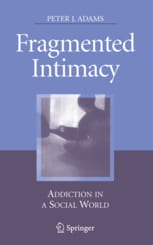The presence of practitioners in recovery from their own addiction as members of teams working with addictions has a critical value in developing service effectiveness.
From the point of view of clients coming to a service, the visible presence of recovering practitioners is likely to reassure them that the team will understand their needs and offer insightful help. The recovering practitioner also offers a positive role model giving clients a sense of hope and direction, particularly early in their attempts at change.
From the point of view of other colleagues, the recovering practitioner helps keep the feet of non-recovering staff members firmly on the ground regarding what can realistically be achieved. Through their experience with their own addiction, they tend to have stronger appreciation of the pitfalls of buying into client justifications and of underestimating the strength of thought processes that might trigger relapses.
From the point of view of services, the recovering practitioner is often personally committed specifically to working with addictions and therefore tend to put more into their work and stay in the field longer. This often leads them onto taking up leadership roles within the service.
However, alongside a recovering practitioner’s commitment and involvement with their work comes the possibility of relapse, and this can be triggered in a variety of ways. For example, identification with the success of clients can lead to disappointment when events do not lead to favourable outcomes.
Drawing on our own experience of staff relapsing in addiction services, Helen Warren and I pursued conversations with addiction practitioners, both recovering and non-recovering, about their experience of such situations. The following summarizes what we found into four phases: build-up, crisis, discovery and repair.
In the first phase, build-up, a full-blown relapse occurs after a prolonged period of deteriorating relationships. Working long hours coupled with less attention to self-care can combine to threaten the quality and integrity of collegial relationships; the recovering person becomes less open and honest with colleagues, patterns of pride and self-deception begin to creep in, criticism is less easily handled and reactions to problems are exaggerated.
The second phase involves the emergence of some form of crisis. Those close to the recovering person are likely to sense things are going awry but may not attribute the source to their relapsing colleague. They may notice increased signs of stress, negative mood swings and rising tension and conflict between staff.
For the relapsing practitioner the prospect of discovery looms large and threatening. The energy put into concealing their double life is exhausting. For those with good interpersonal skills, colleagues who appear suspicious or pose a threat are alienated using strategies such as strengthening alliances with other staff and using informal staff networks to spread negative views of those who threaten. Fellow staff members find themselves progressively polarised, and as more join the ranks of the suspicious, an us-and-them situation emerges where challenging conversations turn automatically into conflict.
The third phase is where the relapse is finally revealed. Events during this discovery phase typically occur swiftly and with strong impacts for all concerned: staff, clients and services. The level of suspicion eventually reaches a critical point where people in key positions come to see the advantages of action as outweighing the costs of disturbing the status quo.
The trigger for doing something could happen in a variety of ways. A minor event could initiate a series of incidents that provide a catalyst for action. For example, a colleague might complain of having been unfairly rebuked and this could prompt a concerned manager to initiate further enquiries. The trigger might come from external sources, such as when funding agencies or community organisations begin to pose difficult questions.
The recovering person, who has been dreading discovery for some time, is likely, on the one hand, to experience relief from no longer having to maintain this pretence, but, on the other hand, they are likely experience high levels of interpersonal and public humiliation.
During the discovery phase the impacts on close colleagues can also be acutely distressing. Supporters will feel caught between loyalty, disbelief and anger. As the extent of the deception unfolds, they not only face their own personal shame, but they also encounter open hostility for their inaction.
The fourth phase focuses on repairing the damage associated with the relapse. Impacts are widely and deeply felt, particularly if the build-up and crisis periods extend over a long period of time. The process of repair begins as the chaos of discovery subsides and those involved start thinking of what it means for their futures.
In situations of extended crisis following discovery, the recovering person is likely to discontinue any association with the service. Moreover, the negative feelings from those who were marginalised and those who felt betrayed may make it unrealistic to pursue further associations.
Some will perceive the damaged relationships as beyond repair and the credibility of the service beyond rescue. They are likely to choose to leave. Those who stay will initially struggle in maintaining optimism and this may impact on their effectiveness as practitioners. Nonetheless, over the ensuing months and as new staff are employed, the pain and the humiliation subside and a positive pathway for the service begins to emerge.
As stated above, addiction practitioners in recovery contribute significantly to the quality of a service. However, the risk of relapse is important to consider because it can have acutely damaging impacts on the recovering person, their colleagues, their clients and their service. In order to sustain the continuing presence of staff in recovery, organisations would be wise to invest in infrastructural measures that prevent and manage the possibility of staff relapses.
For more discussion on ways of reducing harm from relapsing addiction practitioners see Adams & Warren, Responding to the Risks Associated with the Relapse of Recovering Staff Members within Addiction Services (Adams & Warren, 2010).
For a wider discussion on the nature of addiction, see Fragmented Intimacy: Addiction in a Social World.
Text and image by Peter J. Adams

Recent Comments